
When it comes to Oita, Onsen is famous right?


What to eat while traveling to Oita?
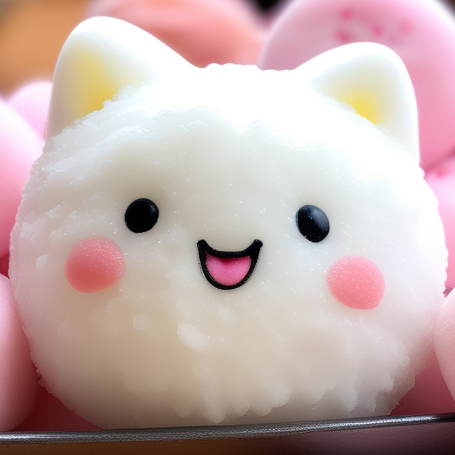
This page introduces a list of local foods (chicken, seafood, fruits, sweets, vegetables, soup, seasoning, pork, noodles) that Japanese people want to eat when sightseeing in Oita, Kyushu region.

Local foods that Japanese people want to eat?

I want you to know not only must-try foods for foreign tourists but also what Japanese people specifically want to eat when they sightsee in Oita.

Some of the information may be the same and some may be different compared to information for foreign tourists. Hope you find something new.
Chicken tempura
- Read in Japanese: Toriten
- Original name: とり天
- Category: Chicken
Chicken is seasoned with soy sauce and garlic, and deep-fried with tempura flour. It is served with mustard and soy sauce mixed with vinegar. It is also eaten with ponzu (soy sauce with citrus juice) or tentsuyu (tempura dipping sauce).

Toritencat, Public domain, via Wikimedia Commons
Google Map
Yoshino chicken rice
- Read in Japanese: Yoshino torimeshi
- Original name: 吉野鶏めし
- Category: Chicken
Chicken and burdock are simmered with soy sauce, sugar, and sake, and mixed with rice. It is often served as onigiri. It is a popular local food that has been featured in a famous Japanese gourmet manga.

Nissy-KITAQ, CC BY-SA 3.0, via Wikimedia Commons
Google Map
Japanese fried chicken
- Read in Japanese: Karaage
- Original name: からあげ
- Category: Chicken
Oita is the birthplace of karaage specialty stores, and there are many karaage specialty stores in Oita. Each restaurant uses its own original sauce to flavor the chicken. Since oil is continually refilled, the umami of chicken adds depth to the flavor to karaage.

Mti, CC BY-SA 3.0, via Wikimedia Commons
Google Map
Ryukyu
- Read in Japanese: Ryukyu
- Original name: りゅうきゅう
- Category: Seafood
Sashimi is marinated in soy sauce and other seasonings, and usually served on top of rice with sesame and other ingredients as Ryukyu don. It is sometimes served as chazuke (rice with green tea).

Nissy-KITAQ, CC BY-SA 3.0, via Wikimedia Commons
Google Map
Blowfish
- Read in Japanese: Fugu
- Original name: ふぐ
- Category: Seafood
Blowfish in Oita can be eaten all year round. The blowfish, whose flesh is tightened by the strong tidal currents of the Bungo Channel, is popular for its plump texture. The meat is cooked thickly, so you can enjoy its sweetness and crunchy texture.
The following figure is the example of blowfish sashimi.
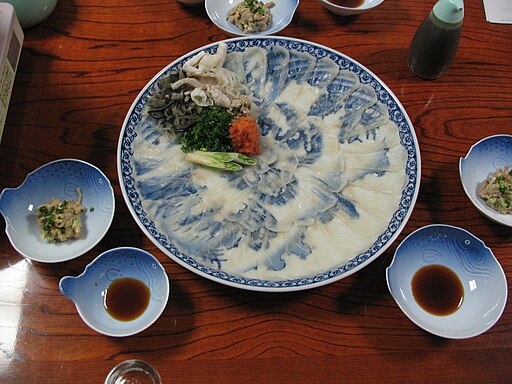
Peter Kaminski, CC BY 2.0, via Wikimedia Commons
Google Map
Yellowtail
- Read in Japanese: Kabosu buri
- Original name: かぼすブリ
- Category: Seafood
Kabosu buri from Oita is a type of yellowtail raised with kabosu produced in Oita added to its feed. It is popular for its light and refreshing taste. It has little odor and a subtle aroma of kabosu.
The following figure is the example of buri shabu.

KCyamazaki, CC BY-SA 4.0, via Wikimedia Commons
Google Map
Mackerel
- Read in Japanese: Seki saba
- Original name: 関さば
- Category: Seafood
Seki saba was the first mackerel branded in Japan. The Bungo Channel is rich in feed and the tidal currents are fast, which produces fatty, firm mackerel. The umami taste is enhanced by sprinkling kabosu produced in Oita over the mackerel.
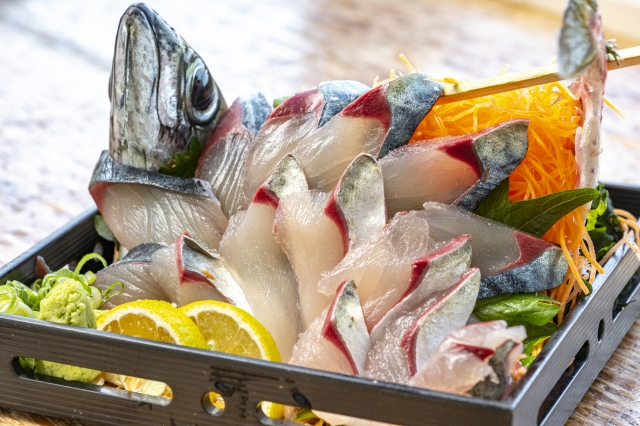
Google Map
Kabosu
- Read in Japanese: Kabosu
- Original name: かぼす
- Category: Fruits
Kabosu has a refreshing aroma and is characterized by a balance of sour and sweet tastes. Most of the kabosu consumed in Japan comes from Oita. It is used as feed for kabosu buri and as an ingredient in kabosu ponzu, introduced above. It is squeezed over various dishes such as soups, noodles, sashimi, and karaage.

No machine-readable author provided. Danny Wilde assumed (based on copyright claims)., Public domain, via Wikimedia Commons
Google Map
Yaseuma
- Read in Japanese: Yaseuma
- Original name: やせうま
- Category: Sweets
Yaseuma is made of wheat flour, flattened and boiled, then covered with soybean flour and sugar. It is deeply rooted in the region that it is served in school lunches in Oita. It is mainly enjoyed as a light meal.

Nissy-KITAQ, CC BY-SA 3.0, via Wikimedia Commons
Google Map
Caramel custard
- Read in Japanese: Purin
- Original name: プリン
- Category: Sweets
Oita has the largest number of hot spring sources and the largest amount of hot spring water in Japan. But, it is also famous for the puddings made by steaming in those hot springs. There are many pudding specialty stores in Beppu, Oita.
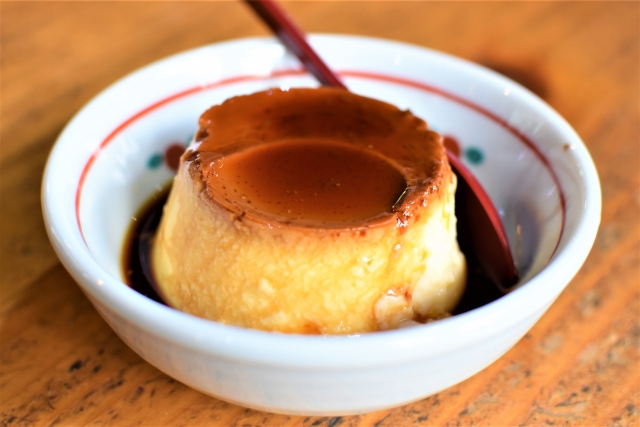
Google Map
Dried shiitake mushrooms
- Read in Japanese: Hoshi shiitake
- Original name: 乾しいたけ
- Category: Vegetables
Oita is said to be the birthplace of shiitake cultivation, and is producing the largest amount of dried shiitake mushrooms in Japan. Dried shiitake mushrooms are often eaten as steaks or used as soup stock for dango jiru, which will be introduced next.
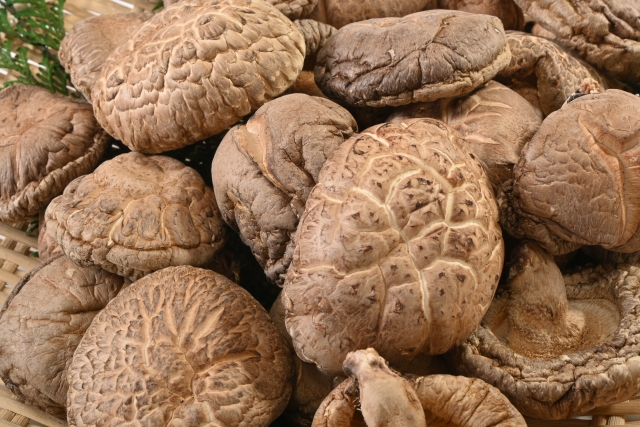
Google Map
Dango jiru
- Read in Japanese: Dango jiru
- Original name: だんご汁
- Category: Soup
Dango jiru is a miso-based soup containing dumplings made of flattened wheat flour and vegetables. Dried shiitake mushrooms and small dried sardines are used for the broth. The noodle-like dumplings are the same as those used for yaseuma, introduced above. It is familiar in Oita that it is served in school lunches.
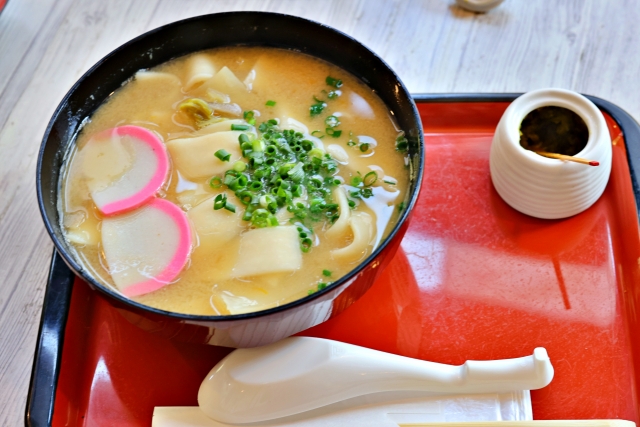
Google Map
Gomadashi
- Read in Japanese: Gomadashi
- Original name: ごまだし
- Category: Seasoning
Gomadashi is a seasoning made by grating grilled fish meat and sesame seeds and mixing them with soy sauce and other ingredients. It is commonly eaten with udon noodles as gomadashi udon. It is also used in chazuke (rice with green tea), tofu, pasta, and other dishes.

Gomadashi, CC BY-SA 3.0, via Wikimedia Commons
Google Map
Yuzu pepper
- Read in Japanese: Yuzu gosho
- Original name: 柚子胡椒
- Category: Seasoning
Yuzu gosho is a seasoning made by rubbing together chopped chili peppers, yuzu peels, and salt and then aging the mixture. It is said to have originated in Oita. It is used in a variety of dishes such as soups, noodles, meat, and sashimi.
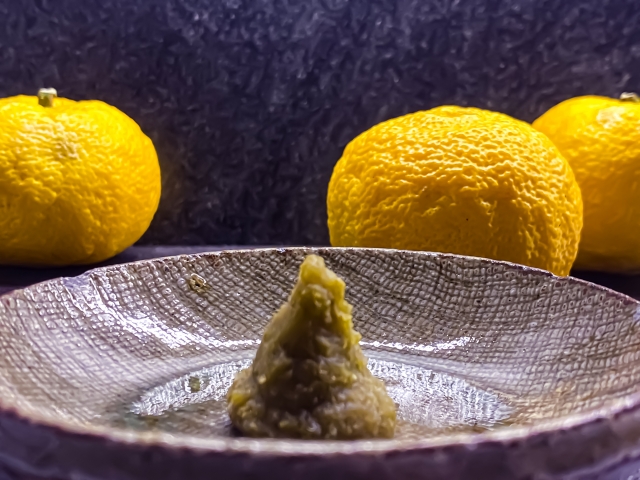
Google Map
Soy sauce with citrus juice
- Read in Japanese: Kabosu ponzu
- Original name: かぼすぽん酢
- Category: Seasoning
Kabosu ponzu is made from soy sauce with kabosu produced in Oita. It has the flavor of kabosu and a refreshing sour taste, and goes well with a variety of dishes such as hot pot, seafood, and salad.
The following figure is the example of ponzu (the left side).

ayustety from Tokyo, Japan, CC BY-SA 2.0, via Wikimedia Commons
Google Map
Nira buta
- Read in Japanese: Nira buta
- Original name: ニラ豚
- Category: Pork
Nira buta is made by stir-frying Chinese chives, pork, and cabbage together and seasoning them with soy sauce. Oita is one of the most famous Chinese chives producing areas in Japan, and is said to be the birthplace of nira buta. It is a popular dish among the local people.
The following figure is the example of nira buta.
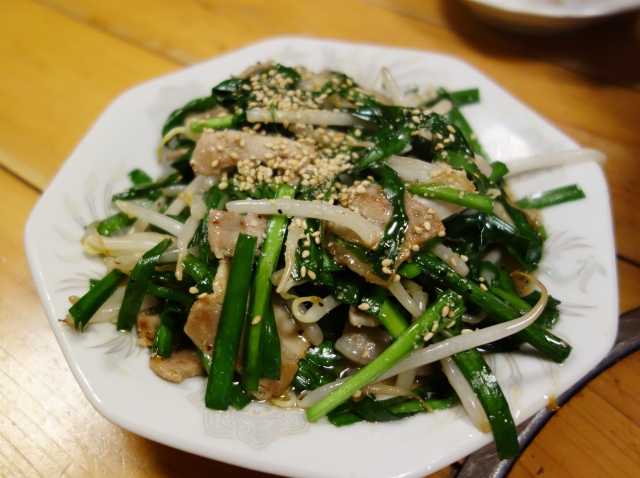
Google Map
Stir-fried noodles
- Read in Japanese: Hita yakisoba
- Original name: 日田やきそば
- Category: Noodles
There are a number of famous yakisoba in various parts of Japan, and Hita yakisoba is one of them. One of the characteristics of Hita yakisoba is that the noodles are well cooked on a griddle, giving them a crispy texture. The noodles are seasoned with vegetables, pork, and sauce.
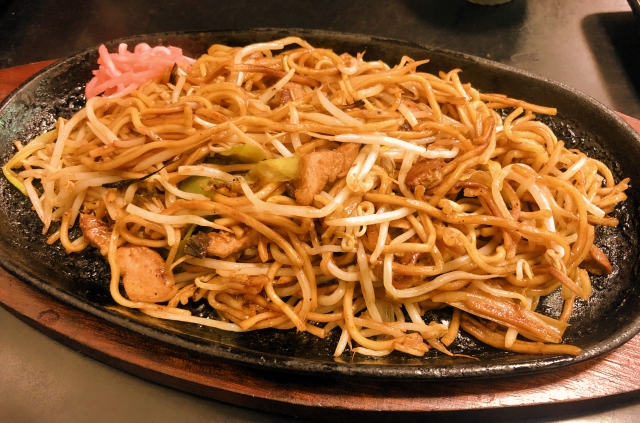
Google Map
Cold noodles
- Read in Japanese: Beppu reimen
- Original name: 別府冷麺
- Category: Noodles
Beppu reimen (cold noodles) is characterized by noodles based on buckwheat flour, wheat flour, and starch, and a seafood-based Japanese-style soup. It is served with char siu beef, kimchi, eggs, etc. As hot springs are famous in Beppu, Oita, it is a popular dish to eat after taking a hot bath.
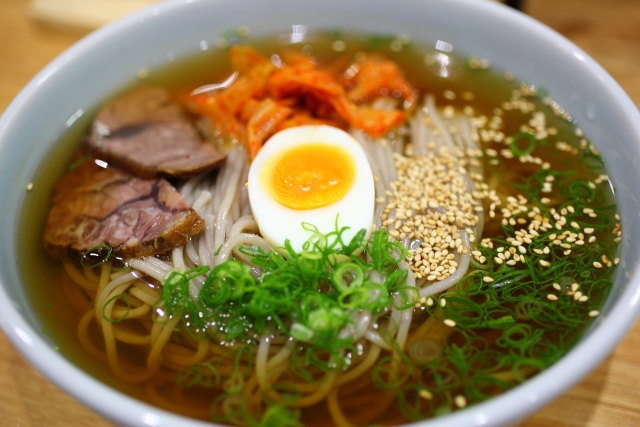
Google Map
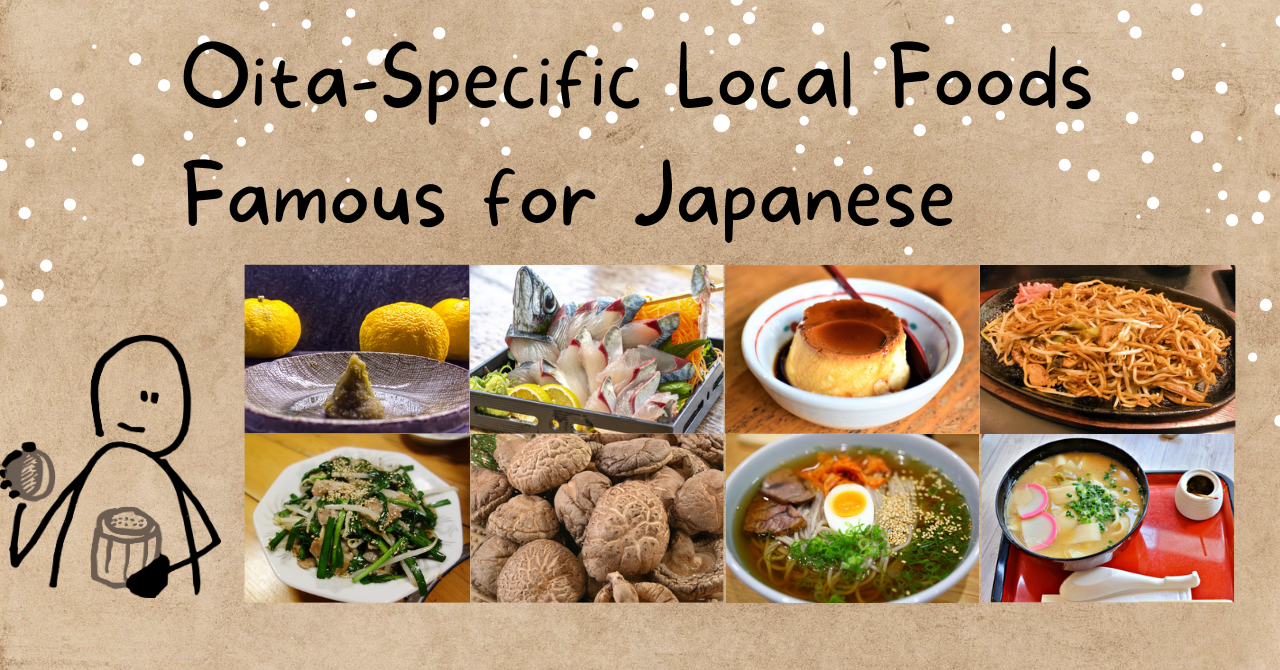


Comment